Like many American kids of a certain era, I grew up dreaming of rafting down the mighty Mississippi, just like my childhood heroes Huckleberry Finn and Tom Sawyer. Mark Twain’s fictional duo lived the life I thought I was destined for: one of freedom, mischief, and adventure. This was, of course, long before I ever heard of bamboo rafting in Sarawak, or anyplace else.
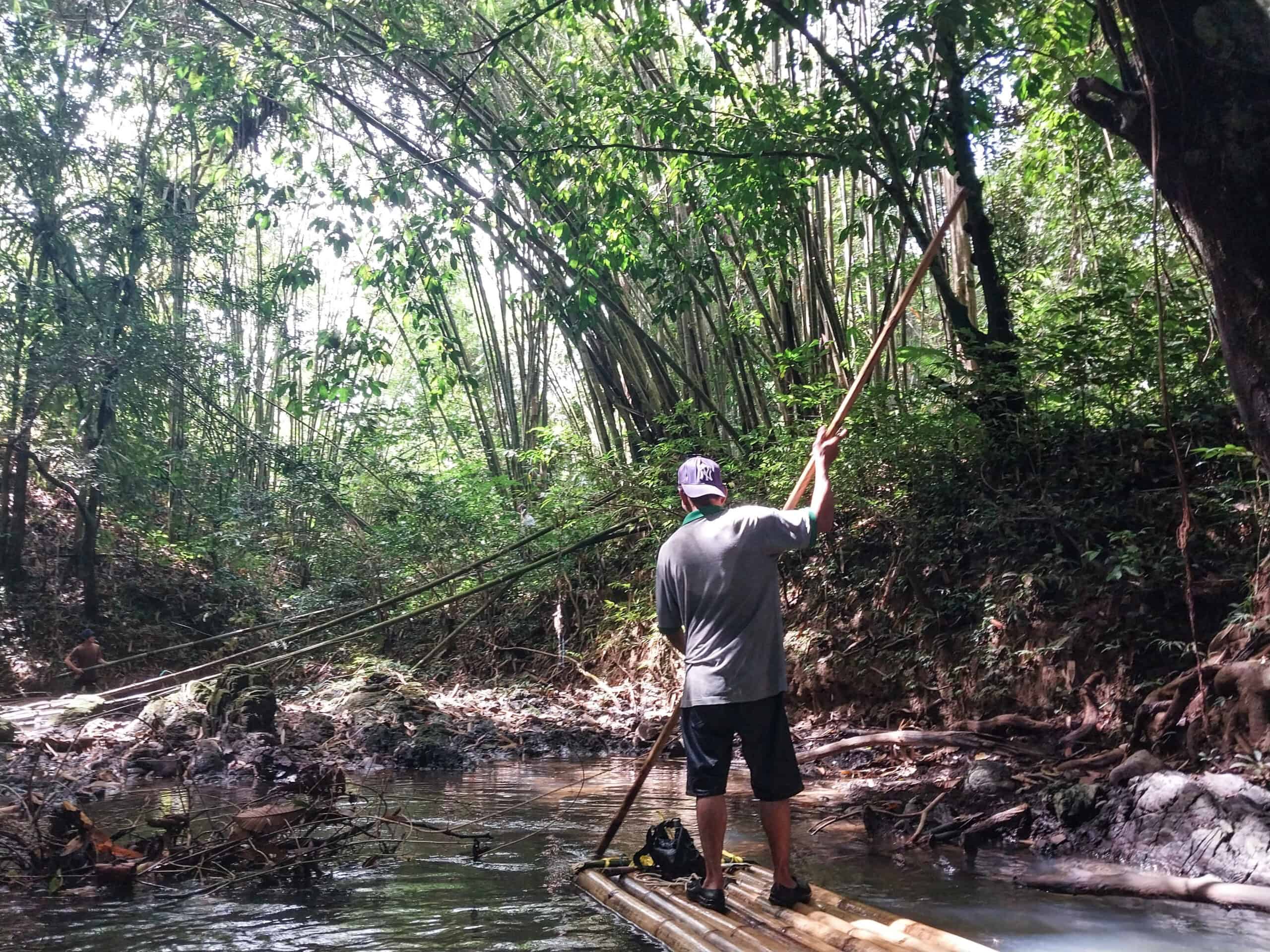
It’s thrilling when kids actually do that kind of thing; defying boundaries, chasing rivers, and giving hope to the rest of us who were stuck under the watchful eyes of cautious parents.
And really, is there anything cooler than a wooden raft handcrafted from trees? Honestly, it’s cool just because someone ever even thought to build a raft from scratch and float it down a river in the first place.
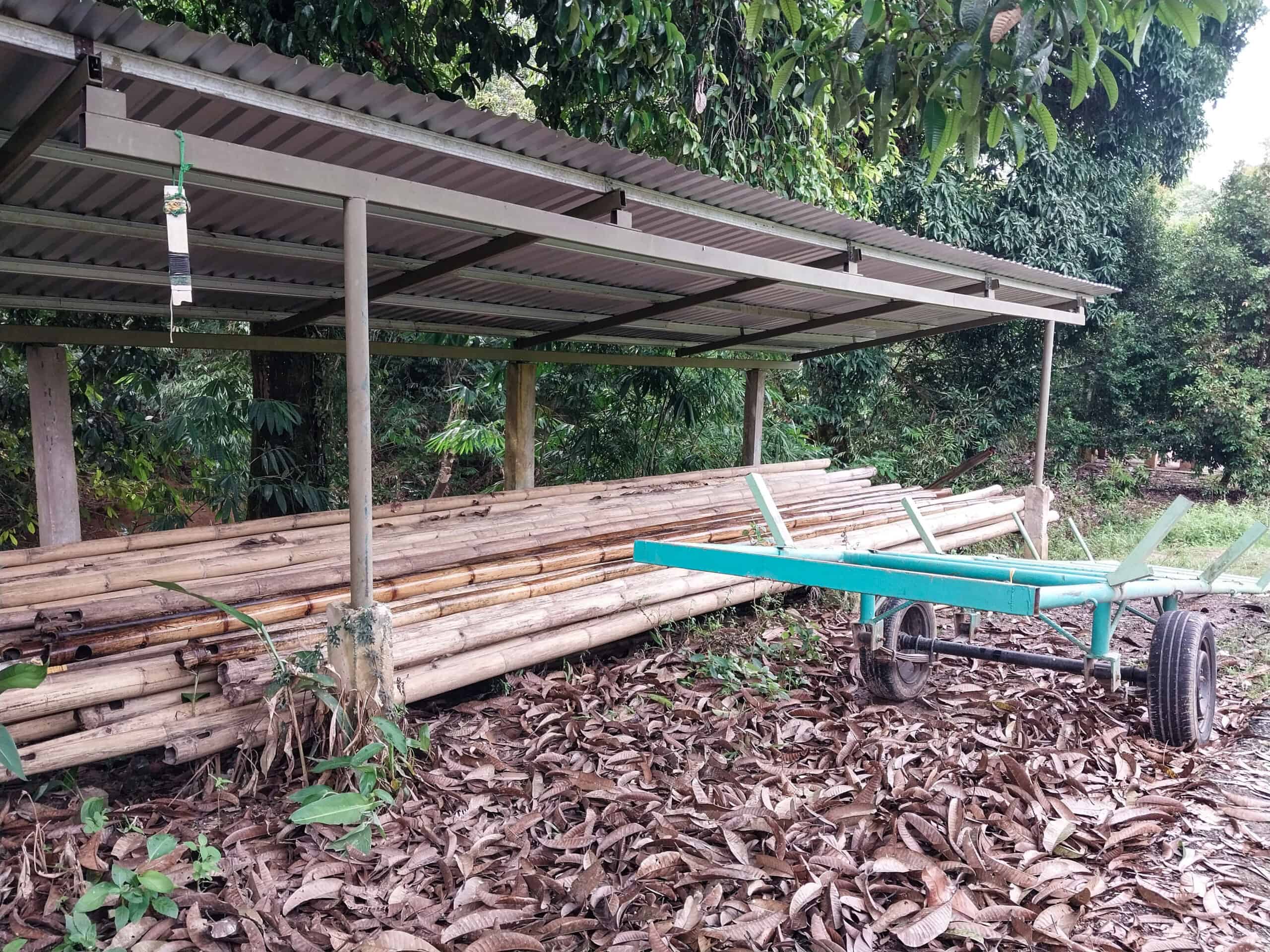
So, imagine my surprise when I learned that bamboo rafting in Sarawak is an actual thing. Same principle, different river, different material. I couldn’t sign up fast enough!
Let’s Go Bamboo Rafting!
Our bamboo rafting adventure began on the Semadang River, which is about an hour or so from Kuching, in the hills of Sarawak’s Padawan district. The water is surprisingly clean, mostly calm, and has a few mini rapids here and there. The downstream bamboo rafting route runs about 8 to 12 kilometers and usually takes around three hours, give or take.
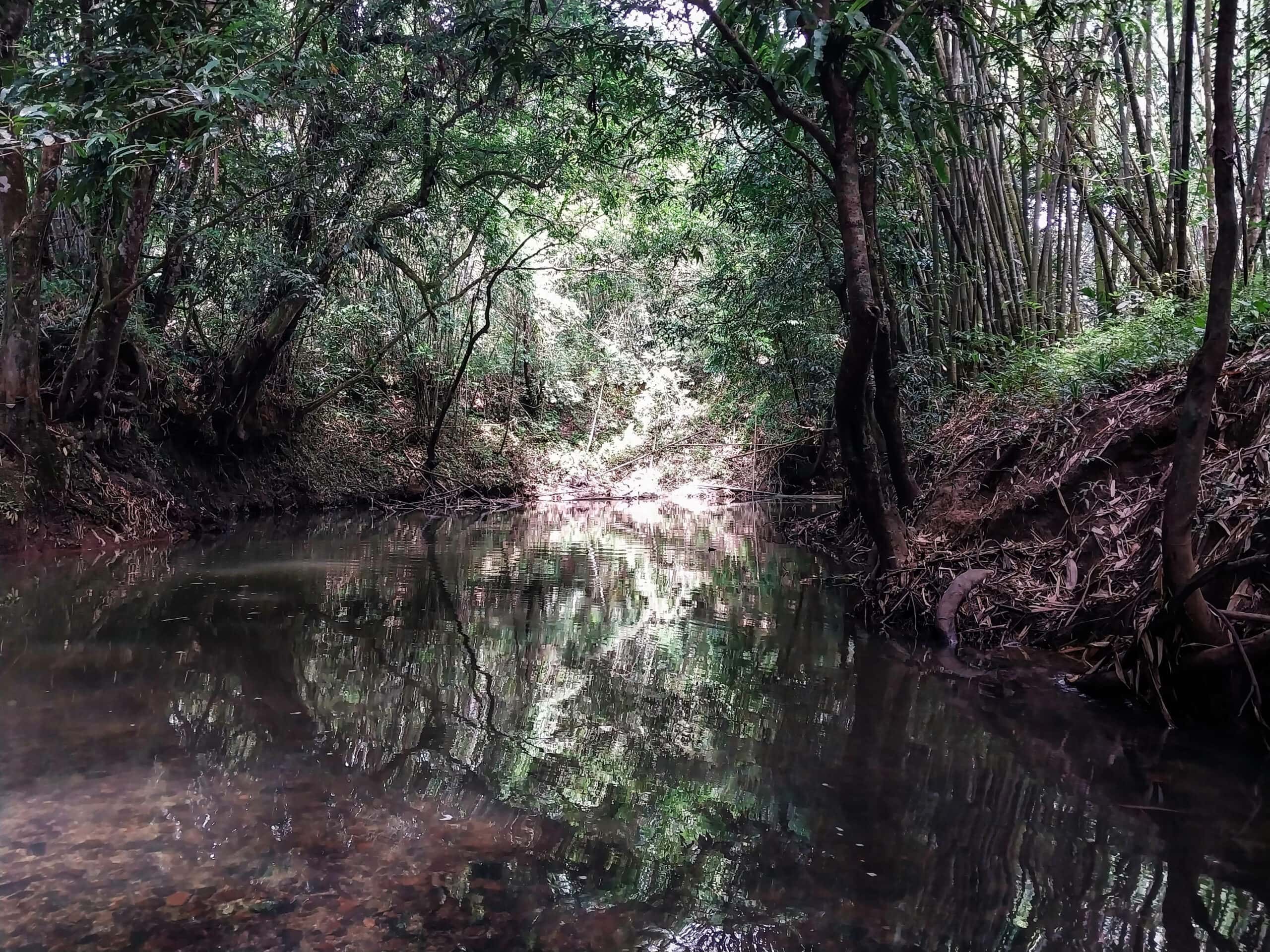
It winds through Bidayuh land, one of Sarawak’s largest Indigenous communities. They’ve lived here for generations, farming the hills, fishing the river, and using bamboo rafts long before tourists arrived. Those rafts once carried produce, timber, and livestock, but now they more typically carry people like me, chasing jungle adventures and childhood dreams.
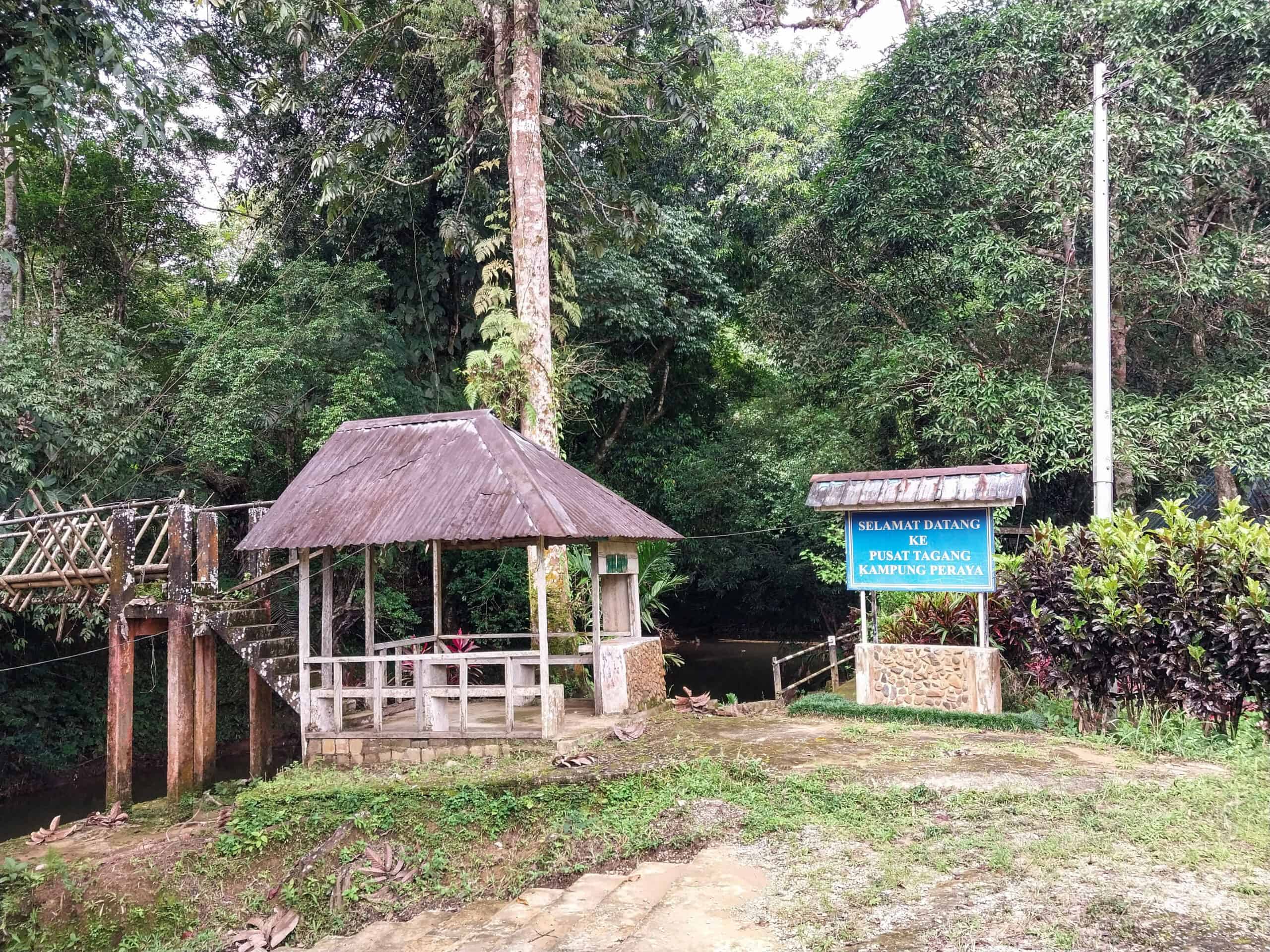
The river guides are all Bidayuh locals. They build the rafts, steer them, cook the meals, and share what they know if you ask. They also manage the river through a system they refer to as Tagang.
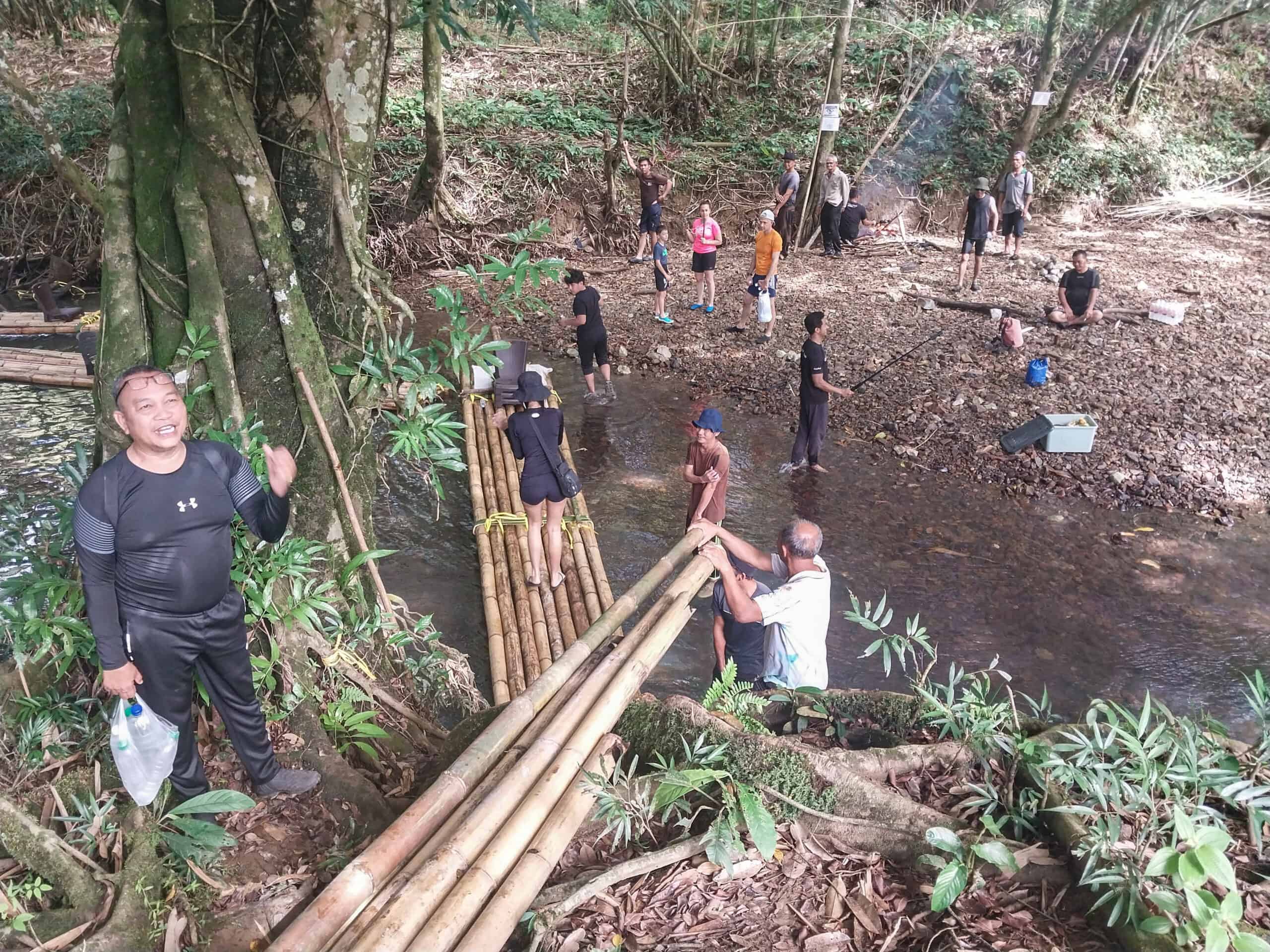
Tagang is a traditional practice used to protect fish populations. Under this system, certain stretches of the river are designated as no-fishing zones for most of the year. The community decides when to open these areas, usually during festivals or special occasions, allowing for sustainable harvesting. It’s their way of balancing conservation with livelihood, ensuring that the river stays healthy for future generations.
Riding the River, Bidayuh Style
To be honest, I had no idea what to expect. I assumed the rafts would be your typical large platform style, like the ones Huck and Tom used. But no, the bamboo rafts used by the Bidayuh locals are something else entirely: nine long (and very straight) bamboo poles tied together, with a width not much greater than a beginner’s surfboard or paddleboard.
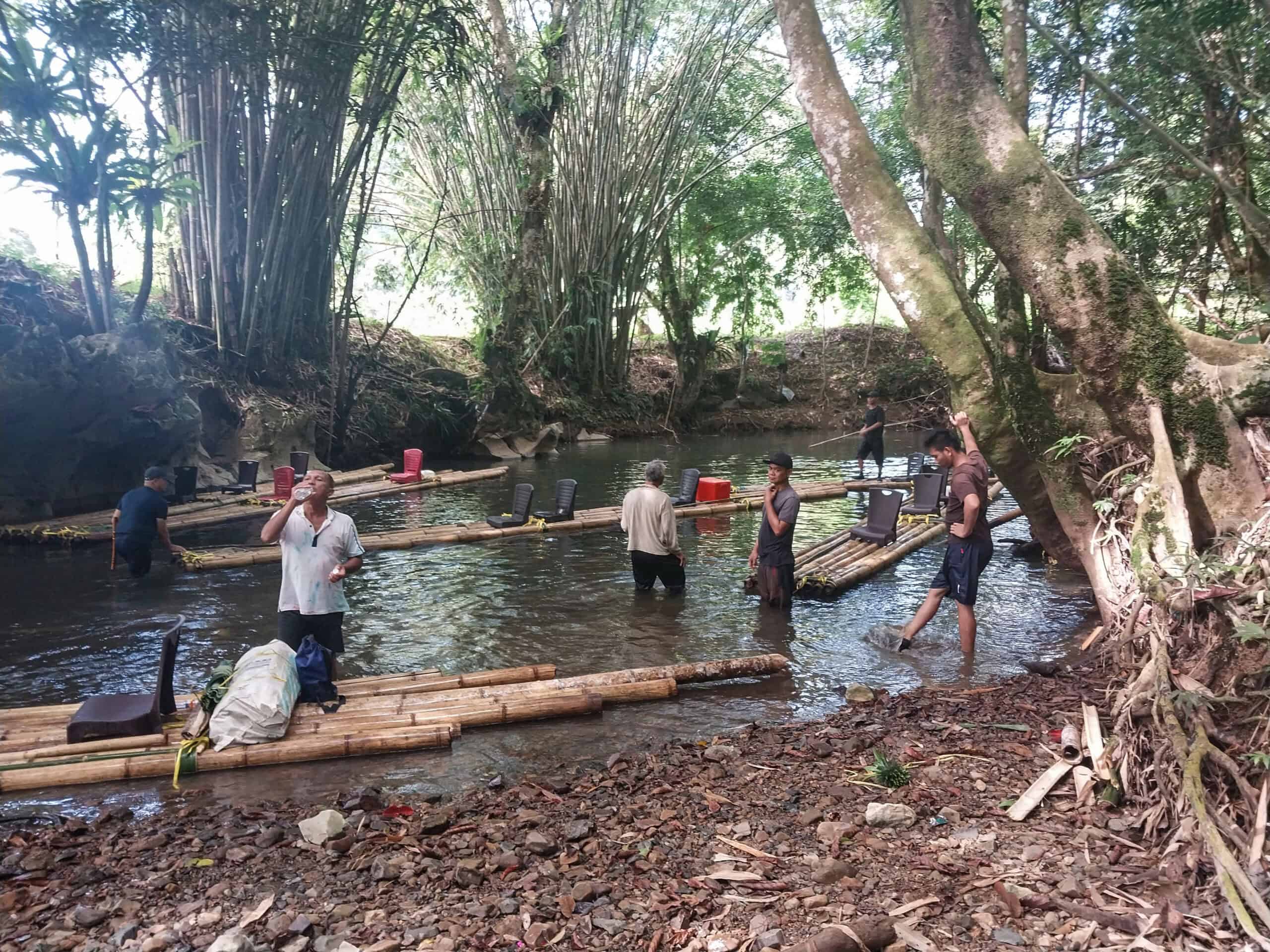
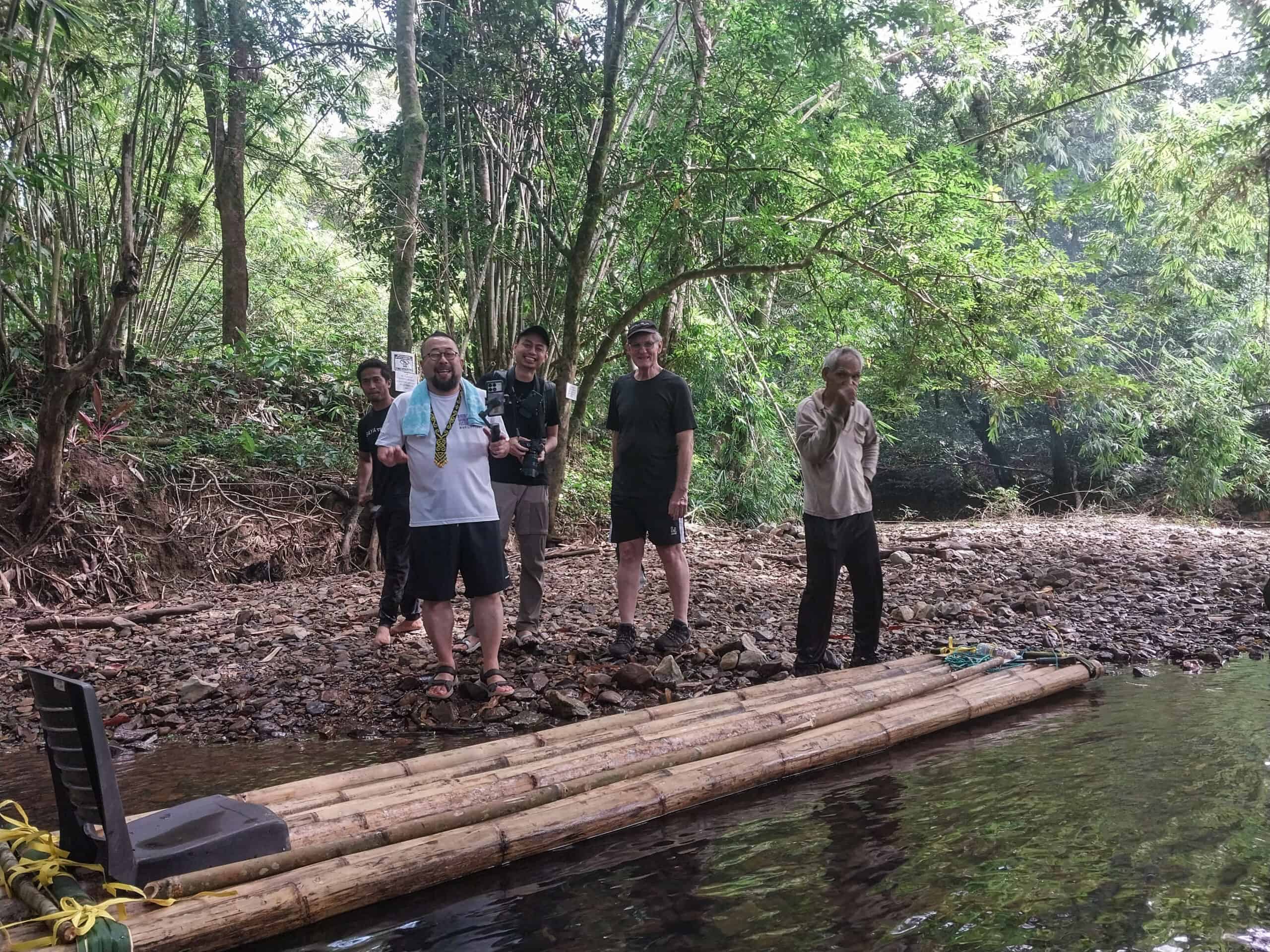
My limited understanding of physics felt useless as I wondered how groups of three to four people were going to ride these things down a river. And since we were apparently VIP rafters, small plastic chairs had been added to the mix. I scratched my head… but somehow, it worked!
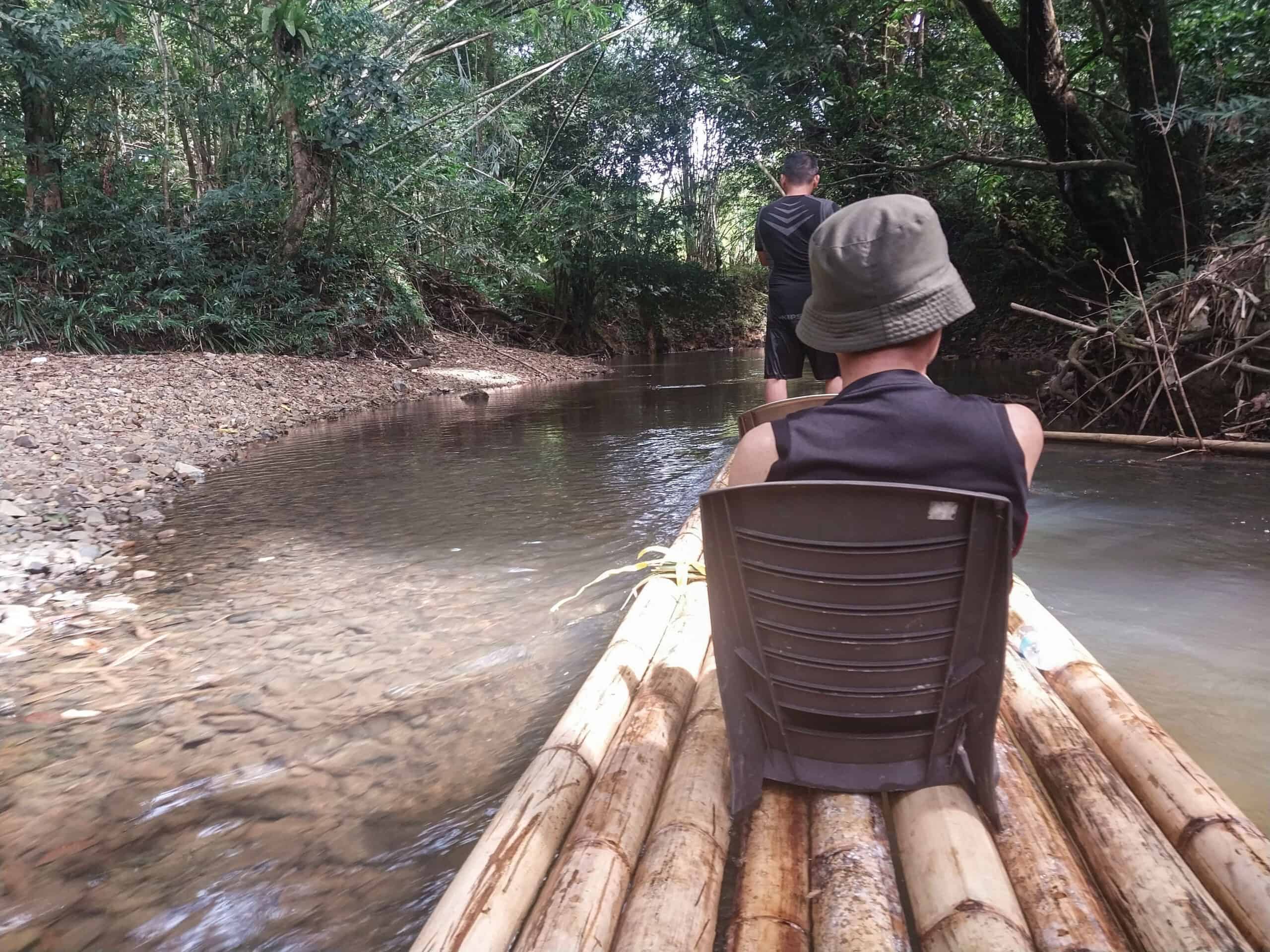
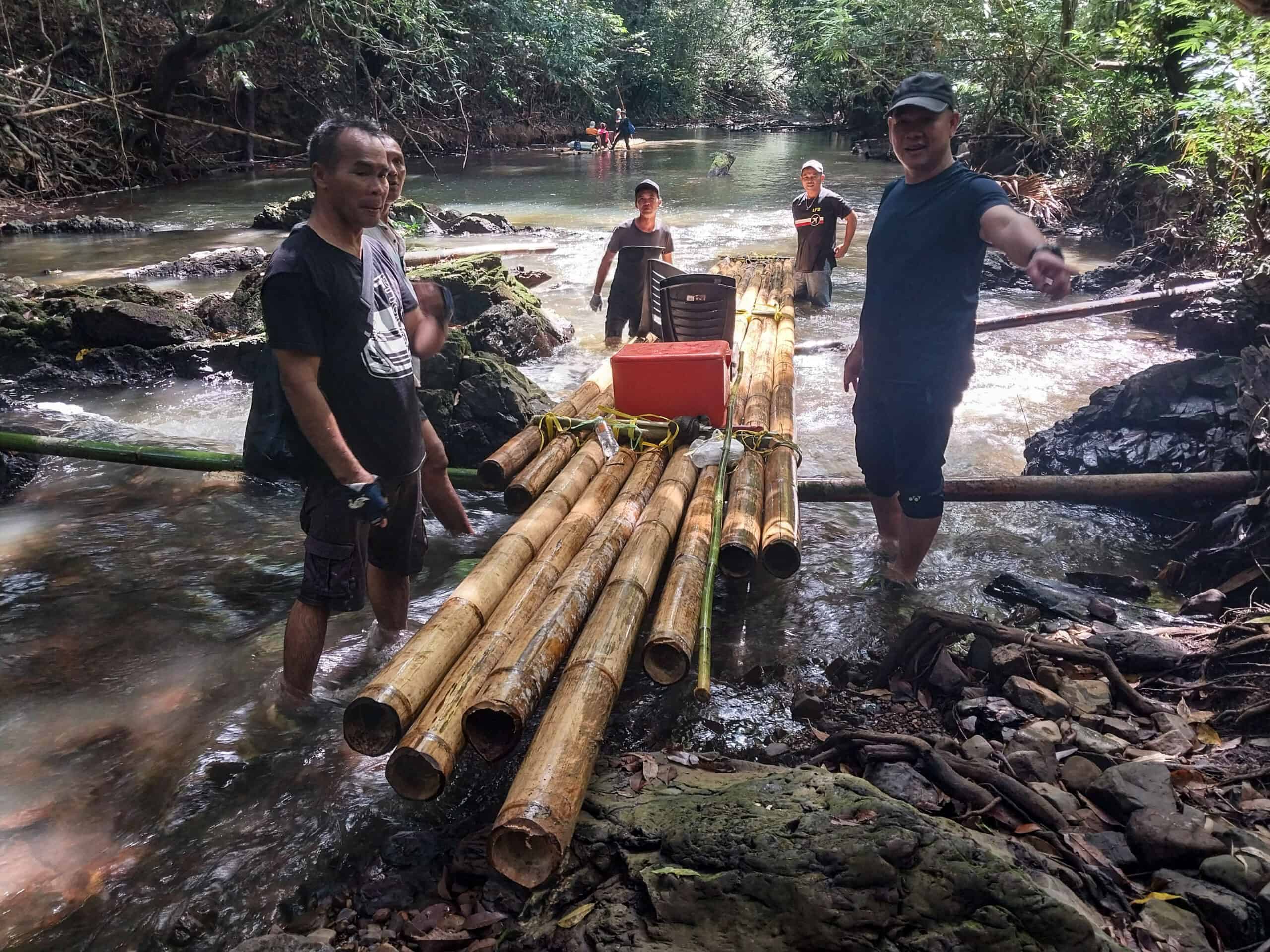
The water was quite low most of the way, though an accidental tumble still carried some risk thanks to protruding rocks, hidden logs, and other riverbed surprises.
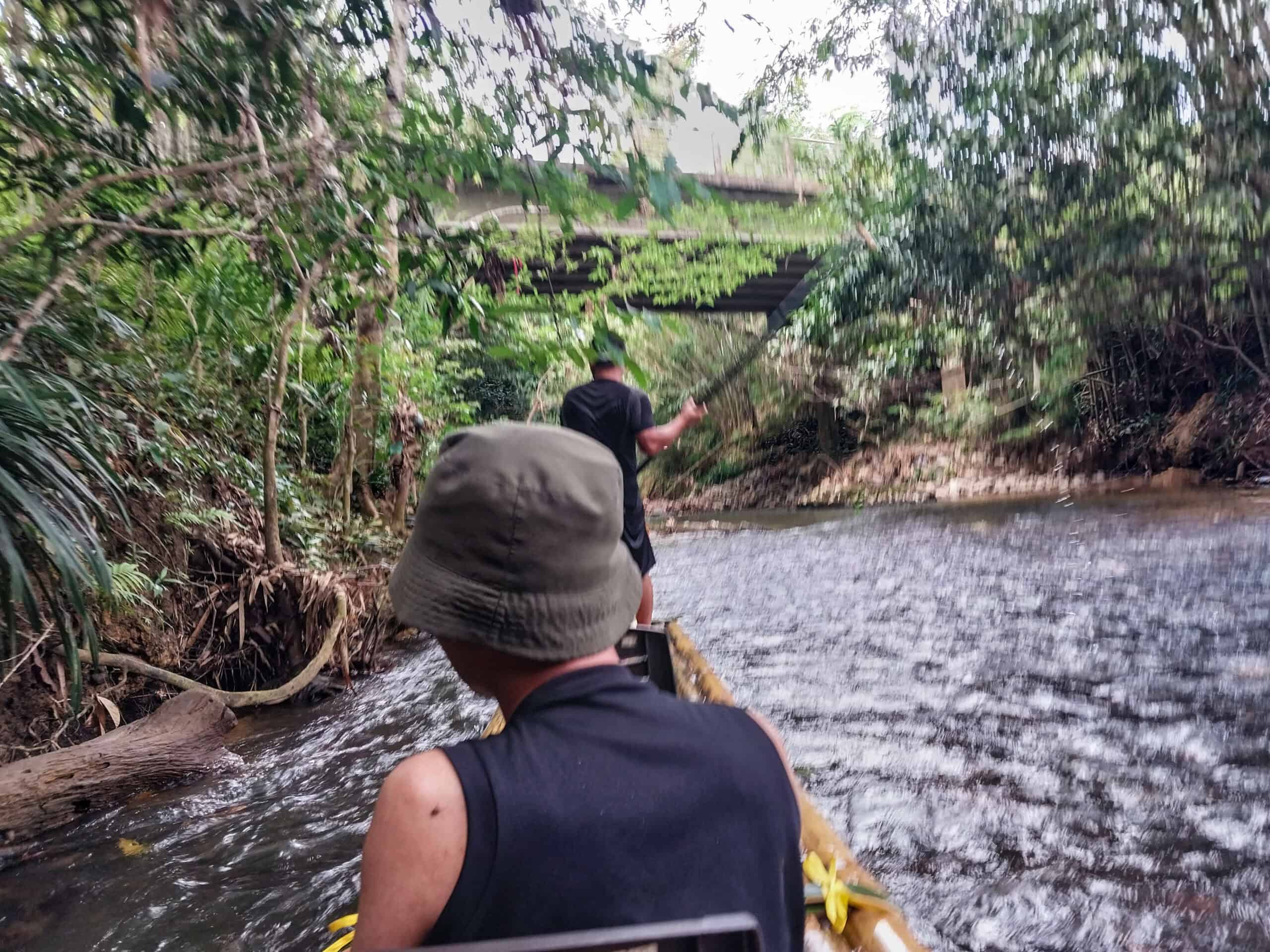
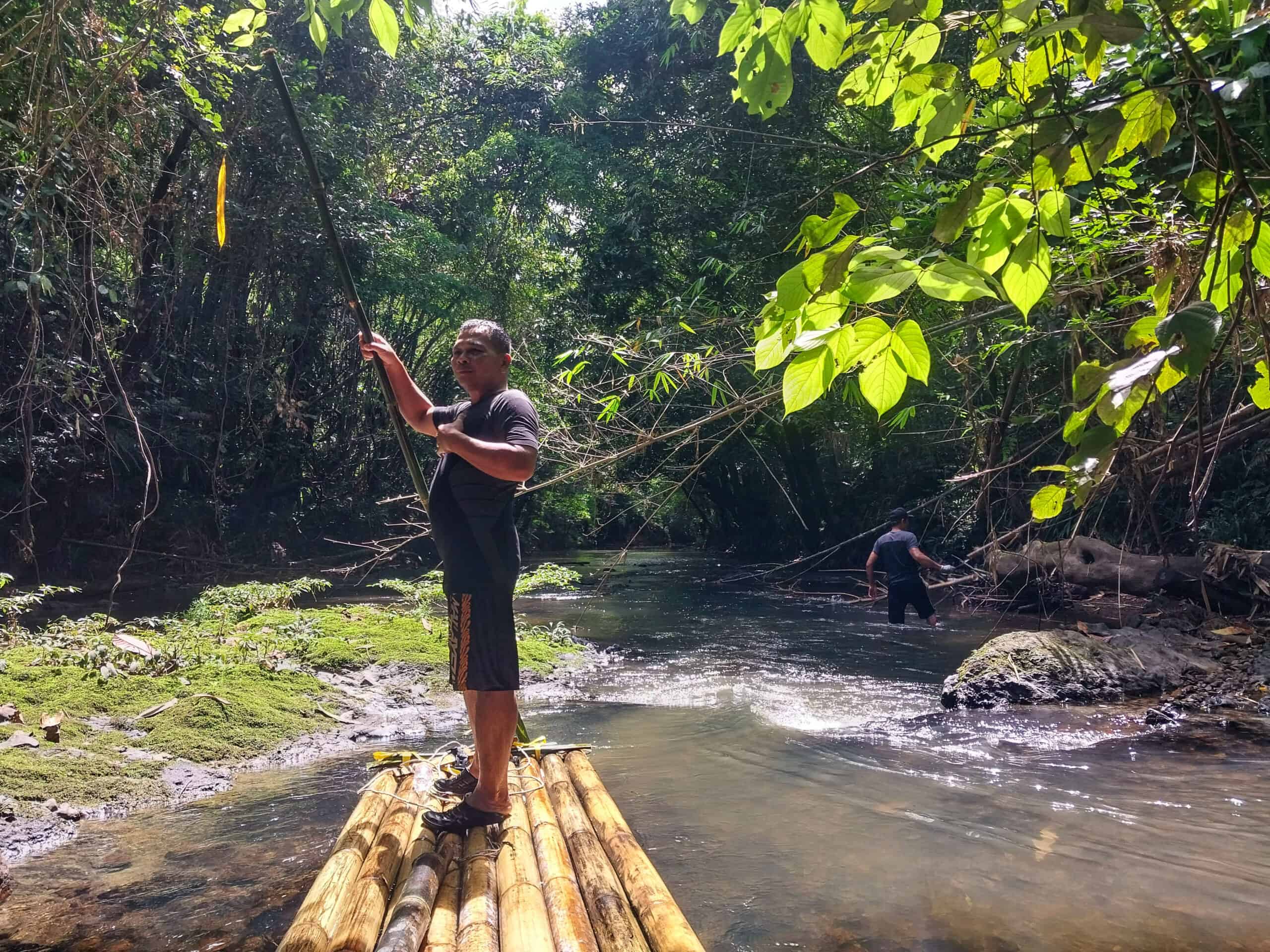
Our river guides, however, were absolute pros and could probably safely navigate the river blindfolded. Even after a few started passing around their homemade rice wine tuak (for the guests, mind you).
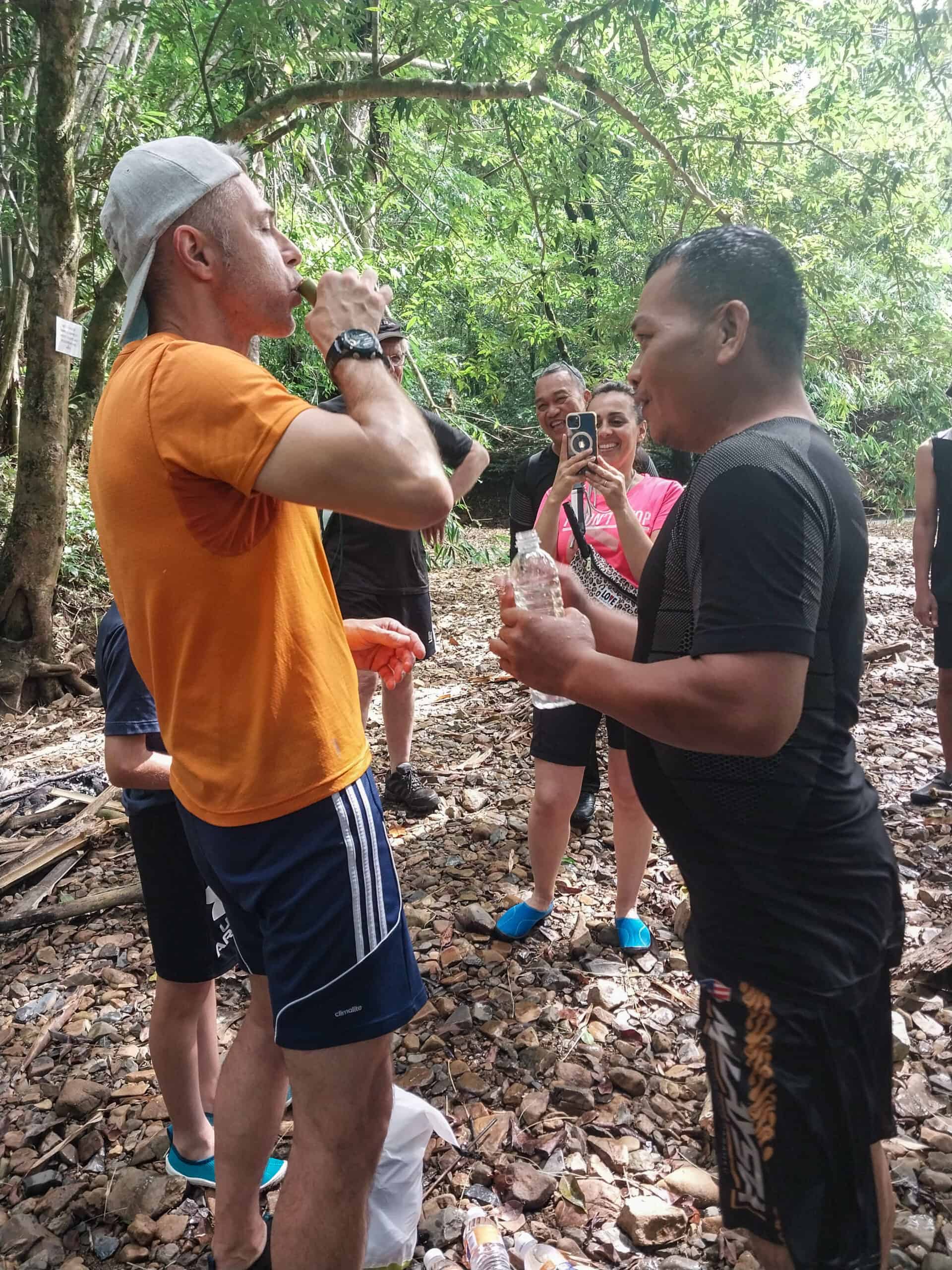
The river banks along the way were noticeably clean too. Where piles of random rubbish have become sadly commonplace in many parts of Malaysia, Sarawak is pro-actively doing something about it to keep things clean. I sure as heck noticed the difference.
Nevertheless, it was a fascinating little journey through lush jungle scenery, as we quietly drifted along. No paddling was required by us either, just one or two guides with poles, nudging us here and there to keep us on a forward course. Guests are also invited to try their hand at steering the rafts, so if you haven’t had too much rice wine give it a go!
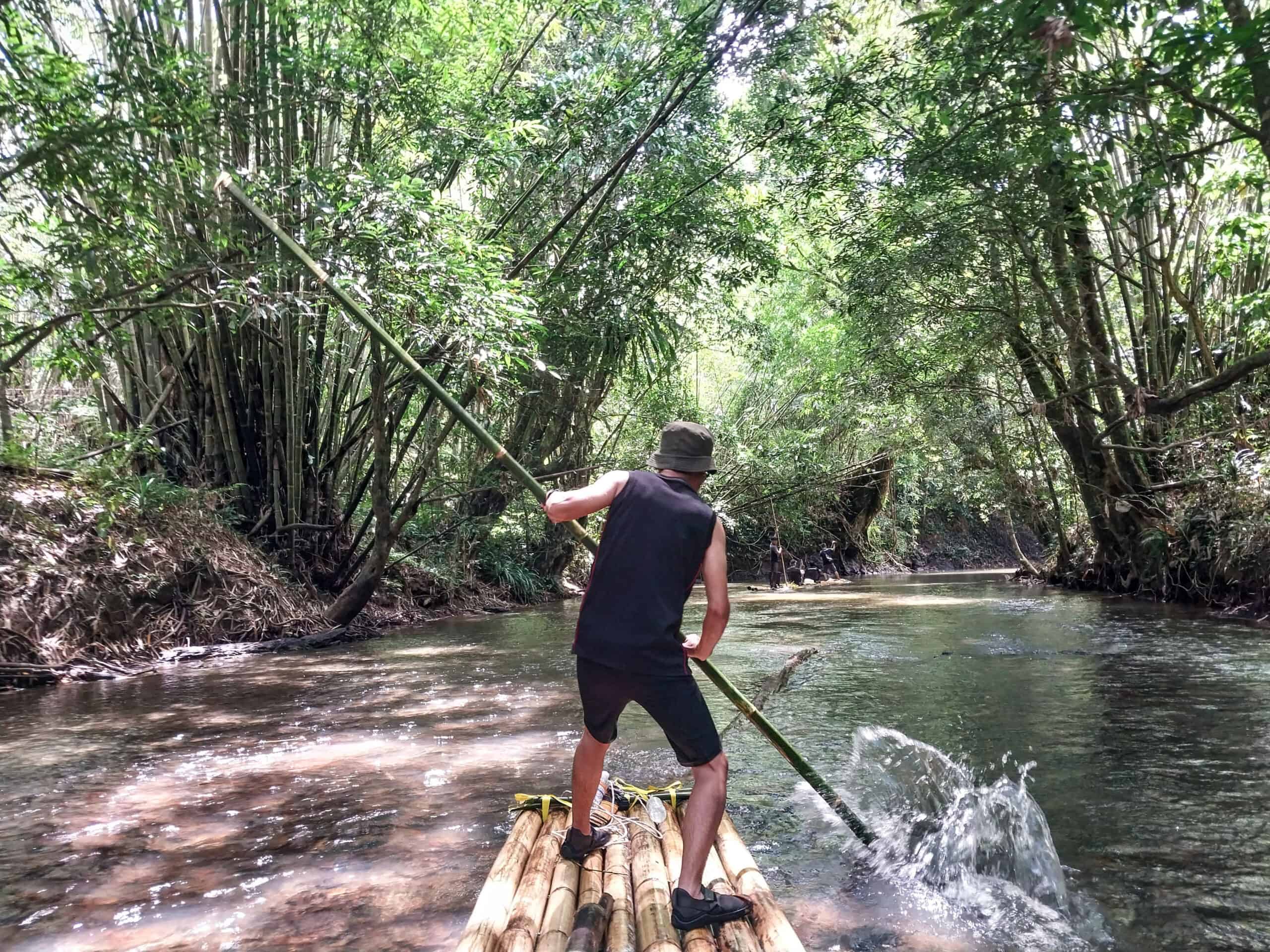
Jungle Table for Five, Please
Although I knew we were stopping for lunch, I didn’t expect the culinary spread that was presented. Nor did I expect it to be casually and expertly whipped up on a riverbank. In fact, I’m pretty sure I have never had such an interesting (or tasty) meal while out in nature.
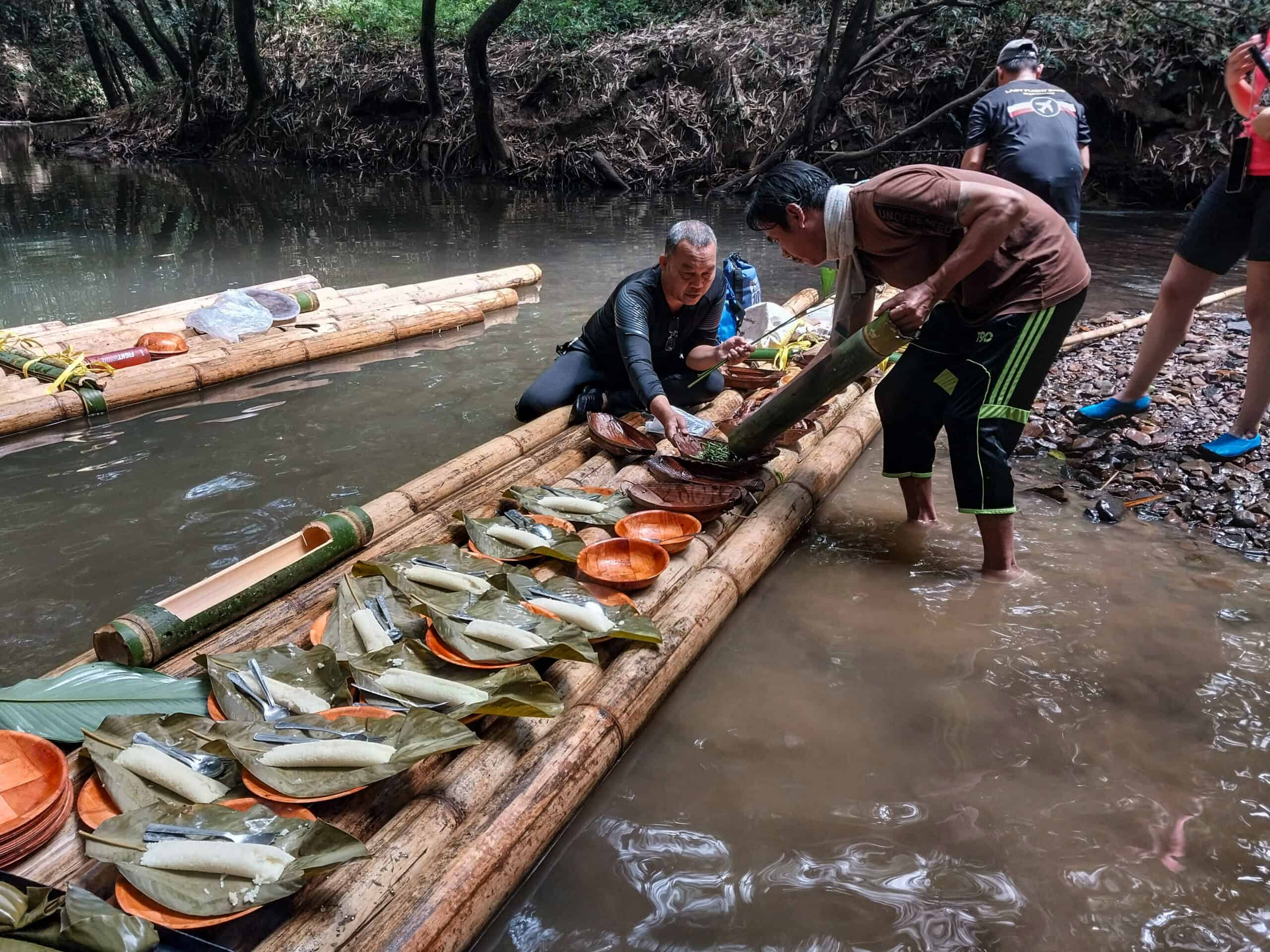
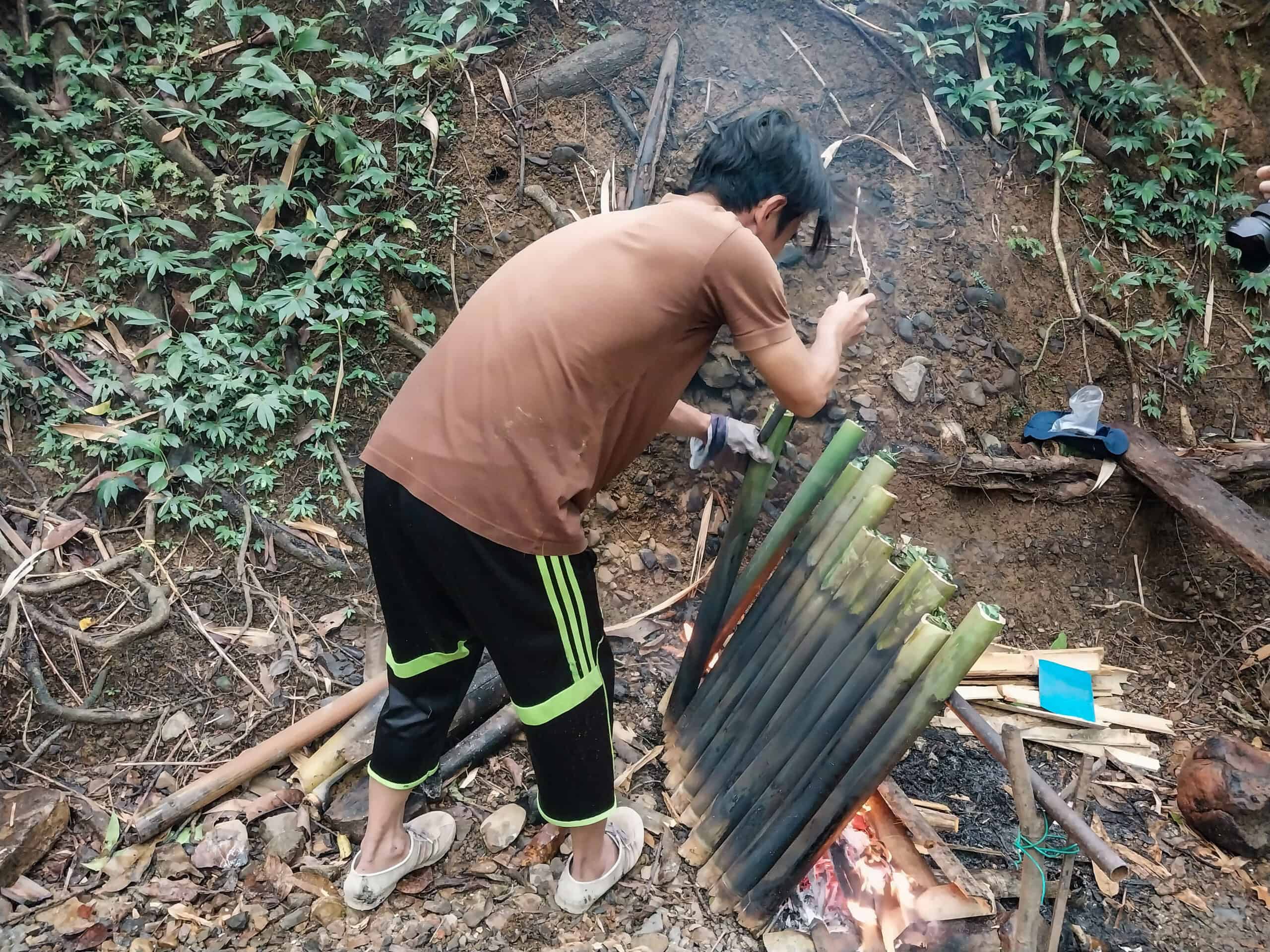
Everything was made from scratch while guests either stood by and drooled or pitched in to pick up a few tips. Our guides cooked lunch over a fire by the river: chicken in bamboo (manok pansoh), grilled chicken (ayam goleh), and stir-fried jungle ferns (midin).
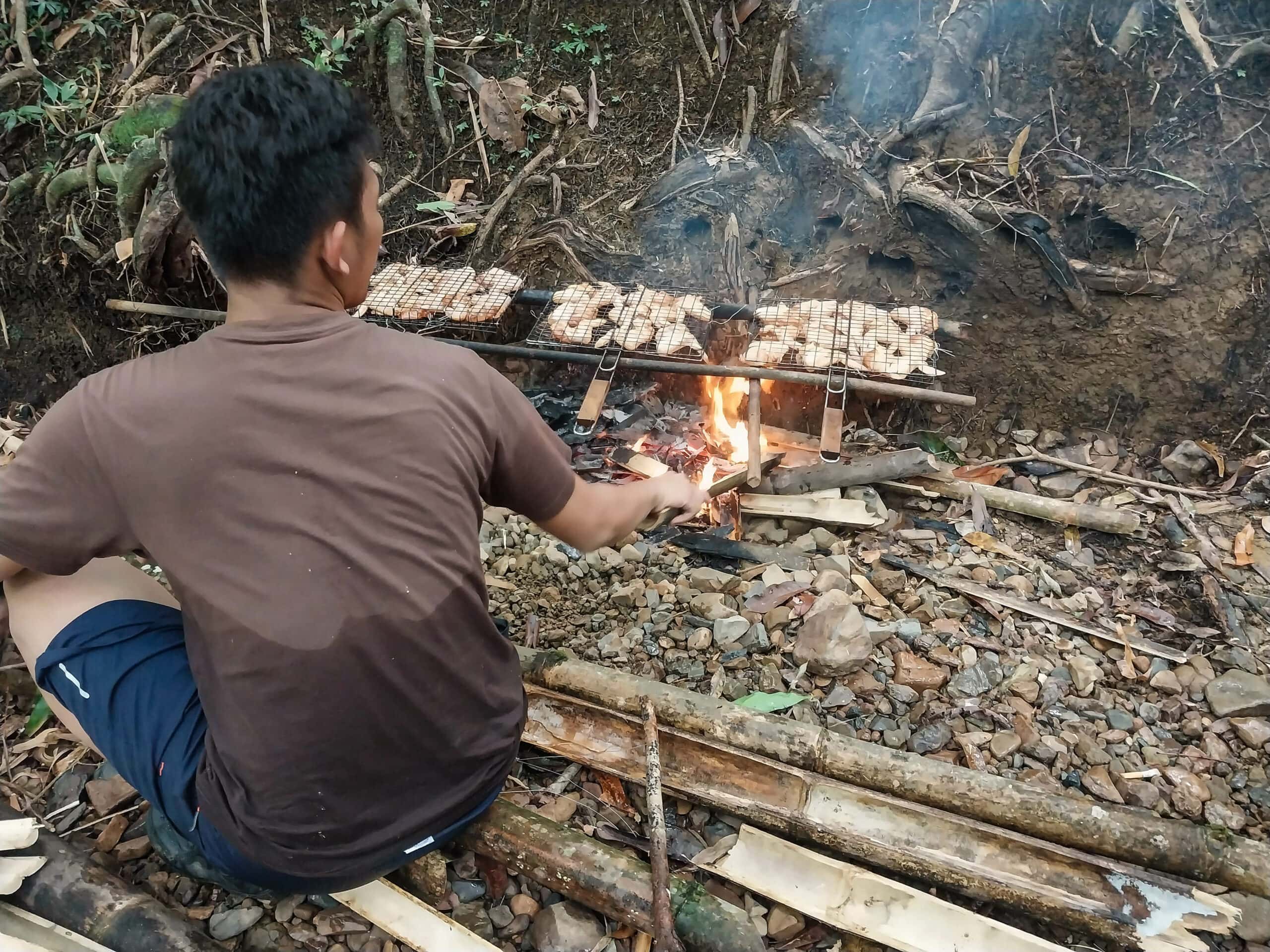
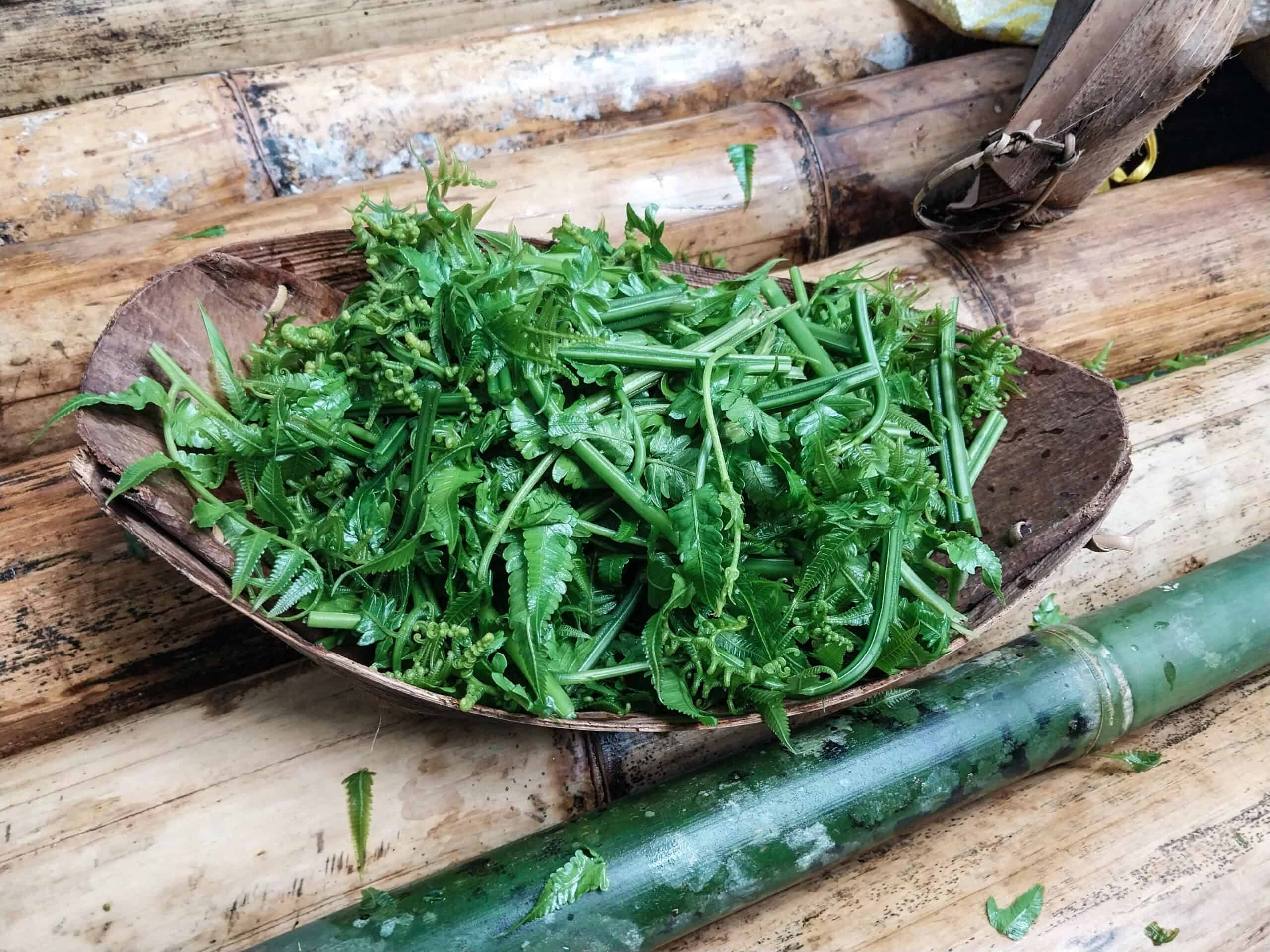
The ingredients coming from nearby farms, home gardens, or the jungle itself. Food was cooked in bamboo and served on banana leaves, making for a sustainable, skillfully prepared, and full-flavored meal. If it were up to me, it would earn a Michelin star. Unique and delicious.
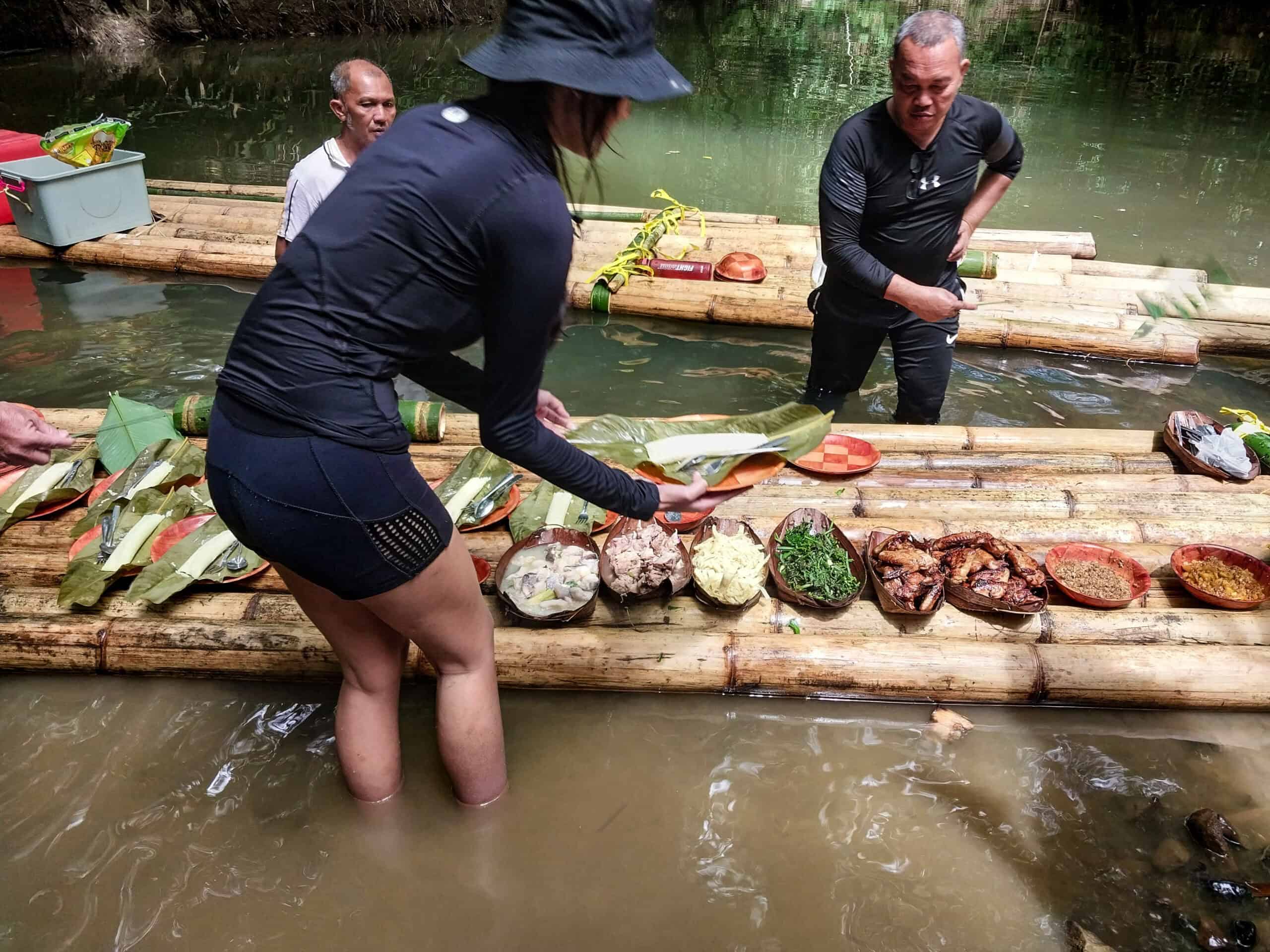
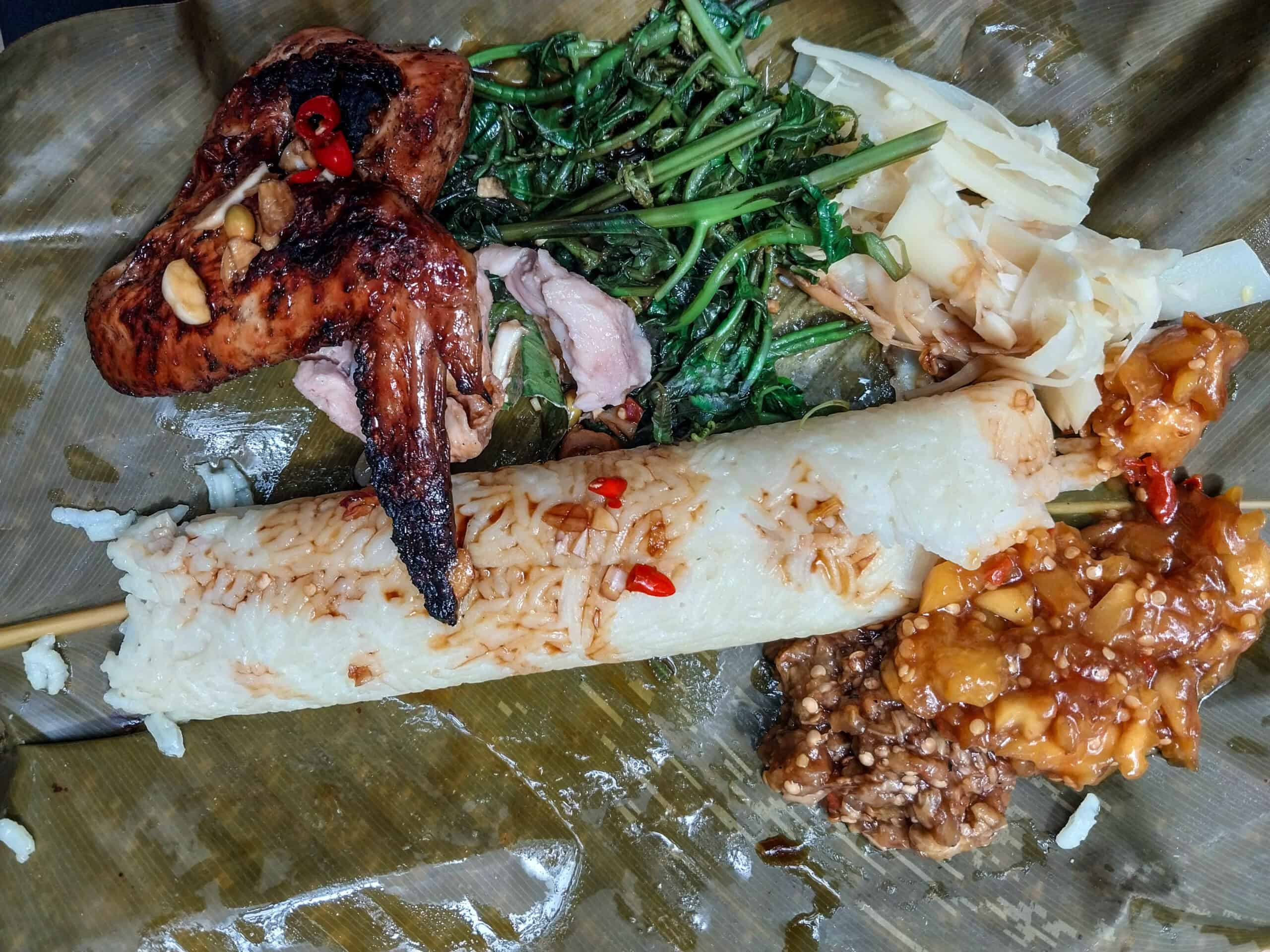
That, My Friends, Was a Blast!
Semadang bamboo rafting trips may be marketed as ‘eco-adventures’, but it didn’t feel like a typical tour. It felt more authentic than that. And although it wasn’t the mighty Mississippi, it scratched my old Huck-and-Tom itch perfectly. I didn’t grow up in Borneo, but for a few hours, it felt incredibly familiar. Just the kind of adventure I used to dream about as a kid. I loved it and I think you will too!
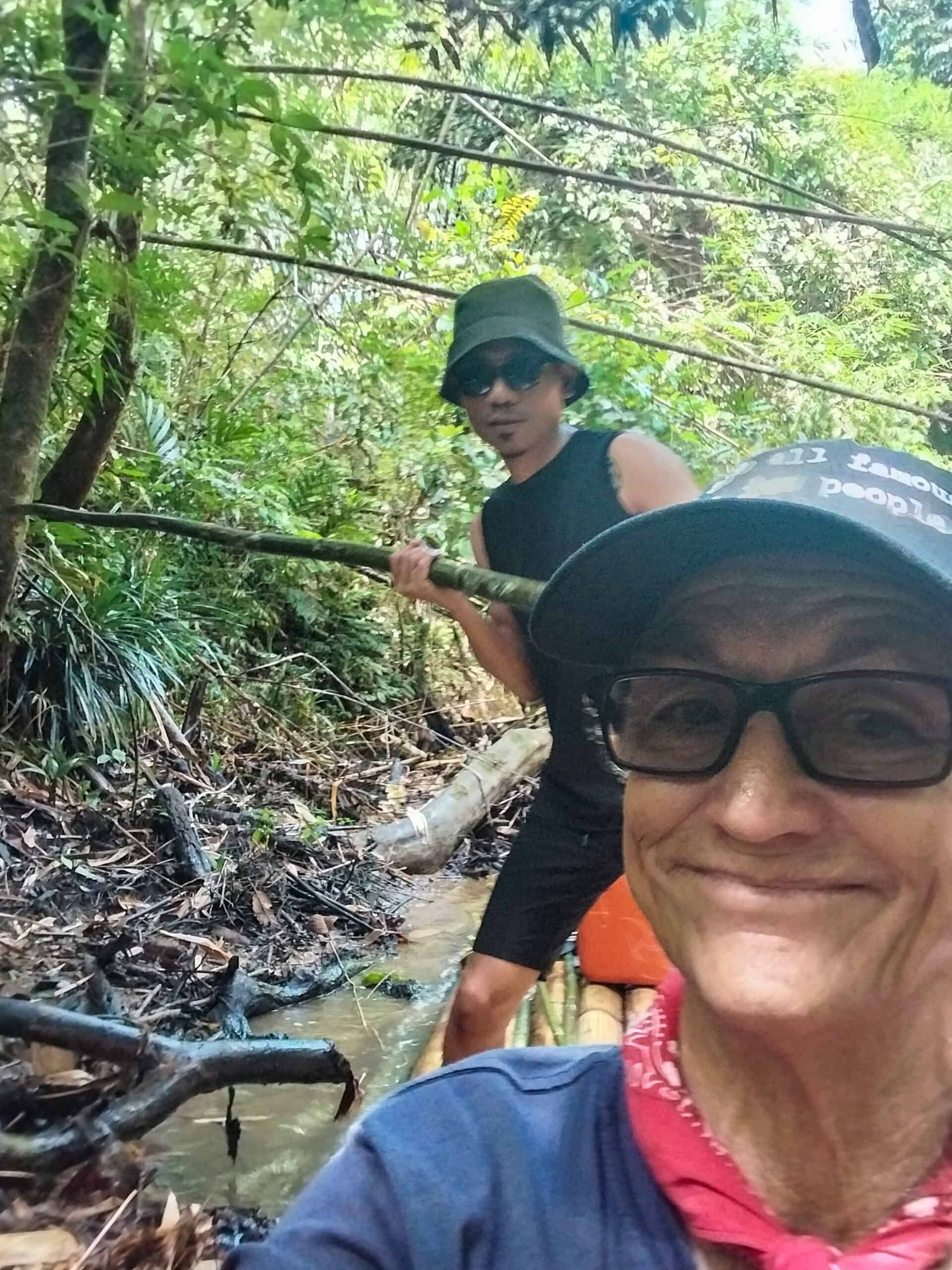
Practical Tips
*The dry season is the best time to go, from March to October, when the river is calmer. During the monsoon months of November through February the water runs faster and conditions can change quickly.
*Wearing light, quick-dry clothes and waterproof sandals or water shoes.
*And of course, bring sunscreen, bug spray, and a waterproof dry bag.
*Bring a change of clothes for afterward.
*Also, please respect the river at all times; don’t litter and don’t disturb wildlife.
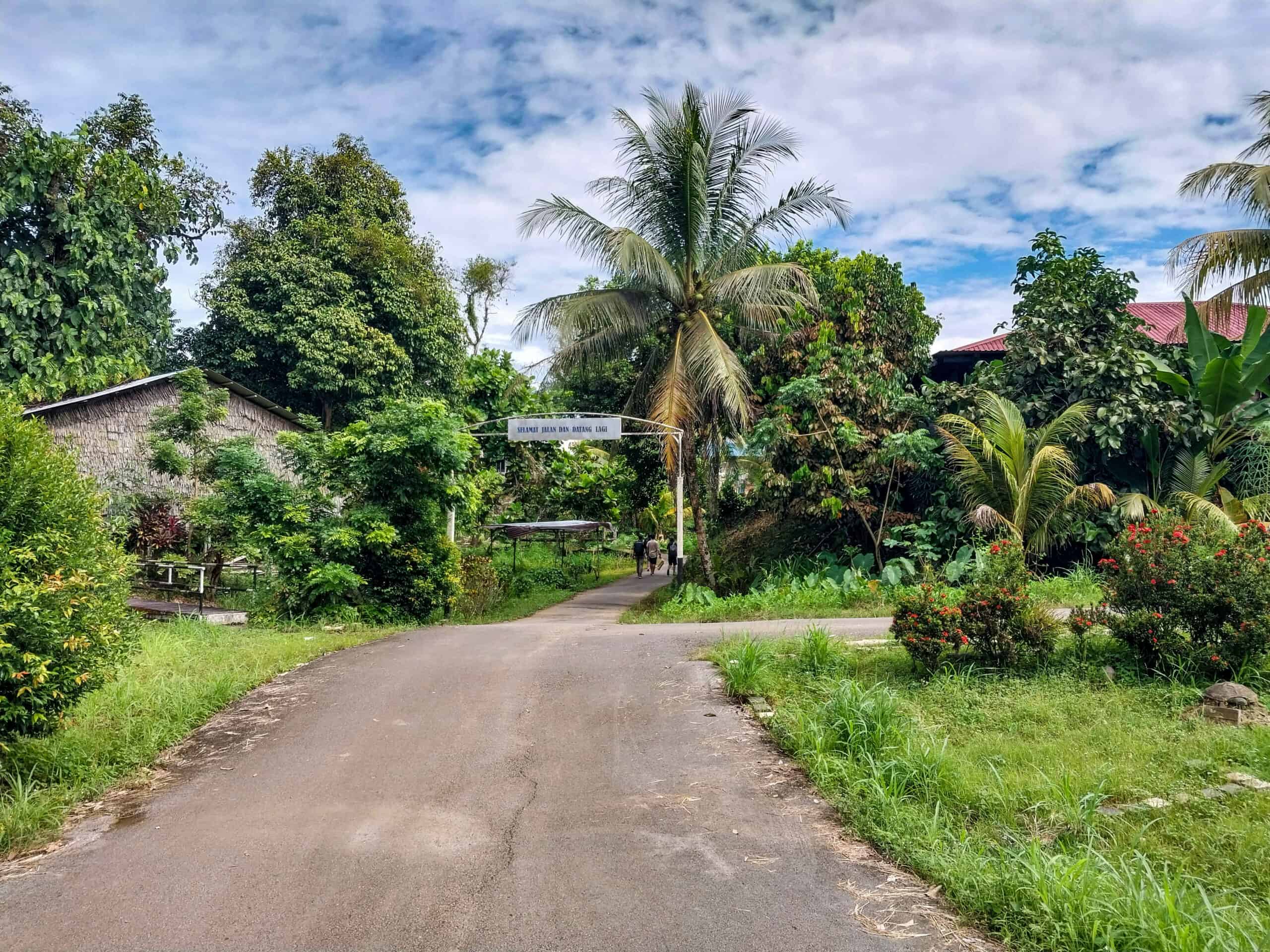
Prices vary depending on whether transportation is included. For booking and more details about the Sarawak Bamboo Rafting Adventure, contact Semadang Adventure or the Sarawak Tourism Board at [email protected] or +60 8-242 3600 / +60 8-241 6700.

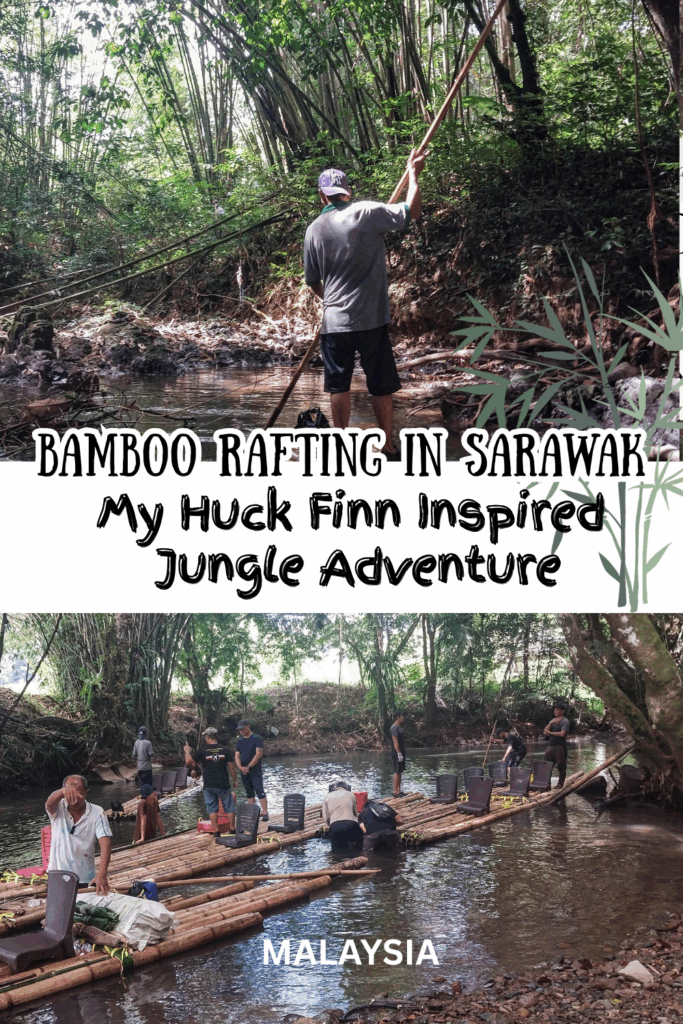
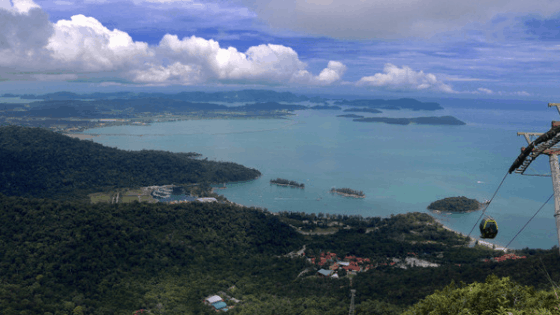
Leave a Reply